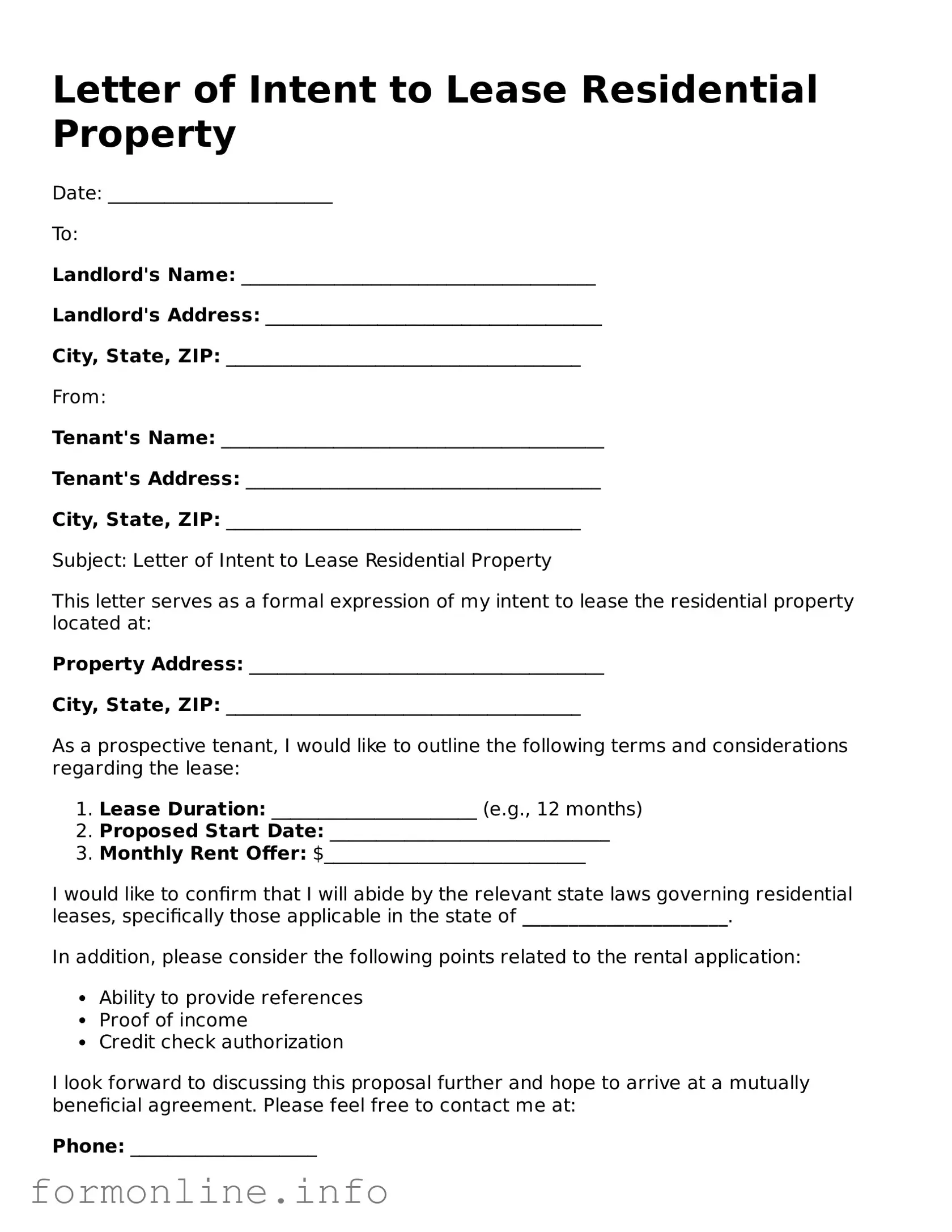Letter of Intent to Lease Residential Property
Date: ________________________
To:
Landlord's Name: ______________________________________
Landlord's Address: ____________________________________
City, State, ZIP: ______________________________________
From:
Tenant's Name: _________________________________________
Tenant's Address: ______________________________________
City, State, ZIP: ______________________________________
Subject: Letter of Intent to Lease Residential Property
This letter serves as a formal expression of my intent to lease the residential property located at:
Property Address: ______________________________________
City, State, ZIP: ______________________________________
As a prospective tenant, I would like to outline the following terms and considerations regarding the lease:
- Lease Duration: ______________________ (e.g., 12 months)
- Proposed Start Date: ______________________________
- Monthly Rent Offer: $____________________________
I would like to confirm that I will abide by the relevant state laws governing residential leases, specifically those applicable in the state of ______________________.
In addition, please consider the following points related to the rental application:
- Ability to provide references
- Proof of income
- Credit check authorization
I look forward to discussing this proposal further and hope to arrive at a mutually beneficial agreement. Please feel free to contact me at:
Phone: ____________________
Email: ____________________
Thank you for considering my intention to lease your property. I await your prompt reply.
Sincerely,
Tenant's Signature: __________________________
